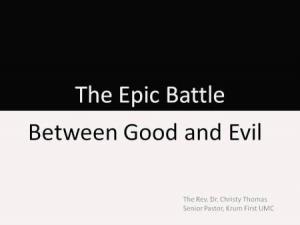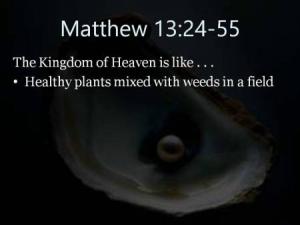My primary observations about worship: If you are a pastor and are reading this, do not ever shortchange your congregation in the message. They deserve the very best research, clarity of thought, illustrations that connect the temporal with the eternal for today’s audience, and practiced delivery.
If you as a pastor dislike preaching or choose not to give that time adequate preparation, then find another profession.

I attend church these days as a simple worshiper, no longer as a pastor in active service nor as a church critic or professional church worshiper, which consumed my early retirement years.
I offer some insights from this time that may be particularly helpful.
Projection Technology in Worship
If you are using projection in worship (if you are not, you probably should be), please note the following.
One: Technology at its best in worship is virtually invisible. It supports the service but does so unobtrusively. One of the most significant issues is having typos or misspellings or other inaccuracies on the screen. When that happens, suddenly the technology or screen becomes the focus, not meeting God in the worship experience. Please proof every slide carefully. Also, be sure you have rehearsed the worship service ahead of time so the person advancing the slides is fully aware of transition times.
Two: Pastors would do well to learn to “metaphor” the messages.
Metaphoring is the act of finding a visual symbol that best represents the main point of the message.
We learn new things by the use of metaphors. Jesus used it all the time, “the kingdom of heaven is like . . . ” Metaphors help us to move from the seen and familiar to the unseen and unfamiliar.
For this reason, the visual used for the metaphor should be something that familiar to the members of the congregation. When they encounter it later, it brings to mind the main point of the message.
Most find it hard work to learn to metaphor a message. It takes much practice. However, it pays off handsomely in the long run. Once you discern that symbolic metaphor, use that image or a variation of it all the way through the slides for the day. It can be darkened/blurred to go behind the words of the music, liturgy or sermon notes, and then clarified in the main point of the message.
Examples of Metaphors
Once when I was preaching on the Kingdom of Heaven passages from Matthew, I used a pearl as the visual:

I darkened the pearl as the background to the bulk of the message so the text would be easier to read.
By using visuals to support the message, the congregation gets reinforcement of the message both by hearing and by sight, significantly enhancing their ability to remember and make sense of the main points.
Each point has its own slide, with the previous points made smaller as I added to the explanation. The progression below actually took six slides.

Other Examples of Metaphors
When I was preaching the shorter ending of Mark where the people were puzzled by the resurrection, I used this image:

As part of a series on Matthew 13, the Parable of the Sower, I used a common weed that was becoming a scourge in my neighborhood. The wild aster, familiar to my particular congregation, illustrates how easy it is to settle for “good enough” rather than real holiness:

When I was offering a message on the necessity of building holy habits I used these worn steps as the visual.

Three: Make sure you have the rights to your image! You can purchase them, (I use Dreamstime), find them online, making sure they are available for public use (like Wikimedia Commons) or create your own. Many good images can be purchased for less than $10. I often find one for $2 to $5. You can then use them over and over and modify them at will.
Four: As a general rule, the background to the screens should be dark and the lettering light. Too many people do it the opposite way. From a distance, it is harder to read dark lettering on a light background.
I have done it differently on occasion for effect, but notice on this slide how much easier it is to read the light lettering on the dark part: 
Five: Use film clips where possible. Clips should never be over 90 seconds long, and 30 seconds is better. You can pick up what you need on YouTube.
I once did a summer series on the nature of good and evil (see slide above) using Harry Potter characters as illustrations. One of my confirmands did brilliant work in finding the right film clips for me each week. He found this particular scene, perfect for one illustration. This clip is too long, so I shortened it a bit when I used it:
The congregation loved the series and I had unusually high summer attendance with it.
Six: Make sure you have very good presentation software. PowerPoint does a good job of making the slides but it alone will not work for the projection need. There are multiple sources of good projection software. Be sure you get one that has the capabilities of editing videos, especially if you get them from YouTube as most will be too long.
A Few Final Points
Know who you are as a church and be confident in that knowing. A well-defined church, like a well-defined person, carries little anxiety and has the energy to focus well on the specific calling. Size is actually immaterial when it comes to the power of the local church’s ministry. Having comfort with who you are and your purpose shows itself in myriads of subtle positive ways to people walking in the door.
Communicate that identity in an updated and informative website. Facebook pages are not an adequate means for this information. Make sure your site displays correctly on mobile devices.
The message is essential. My major observation about worship: If you are a pastor and are reading this, do not ever shortchange your congregation in the message. They deserve the very best research, clarity of thought, illustrations that connect the temporal with the eternal for today’s audience, and practiced delivery.
If you as a pastor dislike preaching or choose not to give that time adequate preparation, then find another profession.
If you are a church member where the pastor either will not or cannot offer the best from the pulpit, encourage him or her to get continuing education in the skill or find another occupation.
Let’s not waste what time we have to be in corporate worship together.













